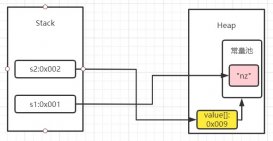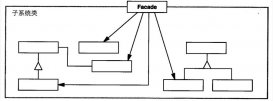Swagger 是一个规范和完整的框架,用于生成、描述、调用和可视化 RESTful 风格的 Web 服务。总体目标是使客户端和文件系统作为服务器以同样的速度来更新。文件的方法,参数和模型紧密集成到服务器端的代码,允许API来始终保持同步。
Swagger 让部署管理和使用功能强大的API从未如此简单。好吧,以上是官方的说法,我直接复制的,在我看来swagger就是一个接口文档管理器,以前我们写接口一般都是world编写,但是有一个问题就是测试的时候需要依赖第三方工具,GET的接口还好,直接浏览器打开,POST的只能依赖另外的工具了,而Swagger呢,可以直接通过代码中的注解生成接口文档(JavaEE),一般人都用这种方式,而且直接集成在项目中,方便成员查看,同时还能直接测试,另外Swagger的界面也不错,也许这就是我选择用Swagger的原因吧,直接官方说的RESTful 风格那个不用管,不是RESTful 风格的接口也能用,当然Swagger还有一种方式就是手动写接口说明了,这样的好处就是代码只有代码,因为一旦代码中添加了Swagger的接口注解后,代码量还是增加了不少,当然坏处就是你改完了代码,还要去改接口文档
SpringMVC集成springfox-swagger2和springfox-swagger-ui很简单,只需要两步:
(1)pom中添加依赖
|
1
2
3
4
5
6
7
8
9
10
|
<dependency> <groupId>io.springfox</groupId> <artifactId>springfox-swagger-ui</artifactId> <version>${springfox-swagger.version}</version> </dependency> <dependency> <groupId>io.springfox</groupId> <artifactId>springfox-swagger2</artifactId> <version>${springfox-swagger.version}</version> </dependency> |
(2)添加Swagger的配置类:
|
1
2
3
4
5
6
|
@Configuration@EnableSwagger2@EnableWebMvc@ComponentScan("com.XXX.controller") public class SwaggerConfig{ } |
然后就可以通过http://localhost/swagger-ui.html看到项目中所有的接口信息了,通过http://localhost/v2/api-docs就能看到json数据。
但是,如何在生产环境禁用这些api文档呢?试了很多种方式,最终找到一个简单实用的办法:
|
1
2
3
4
5
6
7
8
9
10
11
12
13
14
15
16
17
18
19
20
21
22
23
24
25
26
27
28
29
30
31
32
33
34
35
36
37
38
39
40
41
42
43
44
45
|
@Configuration@EnableSwagger2@EnableWebMvc@ComponentScan("com.XXX.controller") public class SwaggerConfig{ @Autowired ConfigService configService; @Bean public Docket customDocket() { if(configService.getServerEnv() == ServerEnvEnum.ONLINE) { return new Docket(DocumentationType.SWAGGER_2) .apiInfo(apiInfoOnline()) .select() .paths(PathSelectors.none())//如果是线上环境,添加路径过滤,设置为全部都不符合 .build(); }else { return new Docket(DocumentationType.SWAGGER_2) .apiInfo(apiInfo()); } } private ApiInfo apiInfo() { return new ApiInfoBuilder() .title("XXX系统") .description("XXX系统接口") .license("") .licenseUrl("") .termsOfServiceUrl("") .version("1.0.0") .contact(new Contact("","", "")) .build(); } private ApiInfo apiInfoOnline() { return new ApiInfoBuilder() .title("") .description("") .license("") .licenseUrl("") .termsOfServiceUrl("") .version("") .contact(new Contact("","", "")) .build(); } } |
现在http://localhost/swagger-ui.html这个页面虽然还能访问,那是却看不到任何内容了,包括http://localhost/v2/api-docs也是一样。
应该还有更好的办法!
参考:https://www.zzvips.com/article/153552.html
swagger必须要跟springmvc在同一个context才行,springmvc只是spring的一个子context。如果swagger让spring的context加载,那么swagger的那些url用springmvc的拦截器是拦截不到的!
所以,两种解决办法:
如果是使用注解的方式:
(1)spring-mvc的配置:
|
1
2
3
4
5
|
<!-- 使用Annotation自动注册Bean,只扫描@Controller --><context:component-scan base-package="com.inspur.eyun.yunbx" use-default-filters="false"><!-- base-package 如果多个,用“,”分隔 --> <context:include-filter type="annotation" expression="org.springframework.stereotype.Controller"/> <context:include-filter type="assignable" expression="com.inspur.eyun.yunbx.swagger.SwaggerConfig"/> </context:component-scan> |
注意要把swagger的配置加进来,同时:
(2)spring的配置:
|
1
2
3
4
5
|
<!-- 包扫描、注解相关 --><context:component-scan base-package="com.inspur.eyun.yunbx"> <context:exclude-filter type="annotation" expression="org.springframework.stereotype.Controller"/> <context:exclude-filter type="assignable" expression="com.inspur.eyun.yunbx.swagger.SwaggerConfig"/> </context:component-scan> |
注意把swagger排除掉
(3)Swagger的配置:
|
1
2
3
4
5
6
|
@Configuration@EnableSwagger2@EnableWebMvc@ComponentScan("com.inspur.eyun.yunbx.controller") public class SwaggerConfig{ } |
注意@Configuration注解。
当然更推荐的办法是使用xml配置的方式,因为这样可以不用引入swagger的依赖包:
(1)spring-mvc的配置:
|
1
2
3
4
5
|
<!-- 使用Annotation自动注册Bean,只扫描@Controller --> <context:component-scan base-package="com.inspur.eyun.yunbx" use-default-filters="false"><!-- base-package 如果多个,用“,”分隔 --> <context:include-filter type="annotation" expression="org.springframework.stereotype.Controller"/> </context:component-scan> <import resource="classpath:spring-mvc-swagger.xml" /> |
spring-mvc-swagger.xml:
|
1
2
3
4
5
6
7
8
9
10
|
<?xml version="1.0" encoding="UTF-8"?> <beans xmlns="http://www.springframework.org/schema/beans" xmlns:xsi="http://www.w3.org/2001/XMLSchema-instance" xsi:schemaLocation=" http://www.springframework.org/schema/beans http://www.springframework.org/schema/beans/spring-beans.xsd"> <description>SpringMVC Swagger Configuration</description> <!-- swagger配置,生产环境置空 --> <bean class="com.inspur.eyun.yunbx.swagger.SwaggerConfig" /> </beans> |
注意:我们这里把swagger单独放到一个配置文件中,如果是线上环境,则文件内容为空,如果是线下测试环境,则配置上Swagger。
(2)spring的配置:
|
1
2
3
4
|
<!-- 包扫描、注解相关 --> <context:component-scan base-package="com.inspur.eyun.yunbx"> <context:exclude-filter type="annotation" expression="org.springframework.stereotype.Controller"/> </context:component-scan> |
(3)Swagger的配置:
|
1
2
3
4
5
6
7
8
9
10
11
12
13
14
15
16
17
18
19
20
21
22
23
24
25
26
|
@EnableSwagger2@EnableWebMvcpublic class SwaggerConfig{ @Bean public Docket customDocket() { return new Docket(DocumentationType.SWAGGER_2) .apiInfo(apiInfo()) .select() .apis(RequestHandlerSelectors.basePackage("com.inspur.eyun.yunbx.controller")) .paths(PathSelectors.any()) .build(); } private ApiInfo apiInfo() { return new ApiInfoBuilder() .title("XXX平台") .description("XXX平台接口") .license("") .licenseUrl("") .termsOfServiceUrl("") .version("1.0.0") .contact(new Contact("","", "")) .build(); } } |
注意:这里我们去掉了@Configuration,同时,修改我们的pom,配置多profile打包:
pom.xml:
|
1
2
3
4
5
6
7
8
9
10
11
12
13
|
<!-- Swagger --> <dependency> <groupId>io.springfox</groupId> <artifactId>springfox-swagger2</artifactId> <version>${springfox-swagger.version}</version> <scope>${swagger.scope}</scope> </dependency> <dependency> <groupId>io.springfox</groupId> <artifactId>springfox-swagger-ui</artifactId> <scope>${swagger.scope}</scope> <version>${springfox-swagger-ui.version}</version> </dependency> |
注意:这里的依赖的scope是动态设置的,如果是线上环境,我们把scope设置成provided就可以。
|
1
2
3
4
5
6
7
8
9
10
11
12
13
14
15
16
17
18
19
20
21
22
23
24
25
26
|
<profiles> <profile> <id>dev</id> <properties> <profiles.active>dev</profiles.active> <swagger.scope>compile</swagger.scope> </properties> <activation> <activeByDefault>true</activeByDefault> </activation> </profile> <profile> <id>test</id> <properties> <profiles.active>test</profiles.active> <swagger.scope>compile</swagger.scope> </properties> </profile> <profile> <id>online</id> <properties> <profiles.active>online</profiles.active> <swagger.scope>provided</swagger.scope> </properties> </profile> </profiles> |
通过不同的profile给swagger的依赖设置不同的scope!
注意:springfox-swagger.version=2.7.0有bug,可以使用低版本2.6.1。太他妈的坑!
以上就是本文的全部内容,希望对大家的学习有所帮助,也希望大家多多支持服务器之家。
原文链接:http://blog.csdn.net/goldenfish1919/article/details/78280051

















